Before the Manifesto gets to its annual obsessive analysis over the March Madness field, let me just tell you the only two things you really need to know about this year’s NCAA men’s basketball tournament:
- You’re a fool if you pick anyone other than Kentucky to win the NCAA title.
- Kentucky is unlikely to win the NCAA title.
Now, if those two statements seem flatly contradictory, recall the abiding randomness of college sports. For example, last year, you may remember Shabazz Napier leading Uconn to the title (alternatively, you may choose not to remember this), but you probably don’t remember Uconn needing overtime to defeat St. Joseph’s in the first round. I’m not trying to diminish Uconn’s achievement (much as I’d like to); I’m just pointing out how incredibly hard it is to win six consecutive college basketball games in March. That’s what’s so crazy and so exciting about postseason tournaments, no matter the sport: The best team isn’t always the championship team.
And let’s be clear about this: Kentucky is the best team. This is barely even up for debate. Sure, they played in a relatively soft conference, but they demolished their opposition, and they did it on both ends of the floor. You’ve probably heard about Kentucky’s ferocious defense, but the Wildcats are a skilled offensive team too, with multiple inside-outside threats that allowed them to rank 10th in the country in offensive efficiency. They’re big, they’re fast, they can shoot, and they can score.
But about that defense: Kentucky leads the country in defensive efficiency this year, yielding just 80.8 points per 100 possessions. To put that in perspective, TeamRankings has data going back to the 1998 season, and no team in the past 17 years has even come close to that mark. This is a historically dominant defensive team. Teams shoot a ridiculously low 35% against them (best in the country), including a putrid 27% from three (2nd), and things don’t get much easier when you get into the paint, where they block 13% of their opponents’ shots (2nd). These guys are monsters.
But will they win? I honestly doubt it. Look, if the question is which of the 68 teams in the field has the best chance of winning the title, Kentucky is the only logical choice. (Vegas is currently giving even money on bets for a Wildcat march to victory.) But if you’re asking me whether I’m taking Kentucky or the entire rest of the field, I’ll go ahead and take the remaining 67 teams. Only one squad gets to cut down the nets, and in the end, it probably won’t be Kentucky. But they’re still the sensible pick.
And now that my head is spinning, on to the region-by-region analysis. Here’s a blank bracket so you can follow along.
MIDWEST (“The Foregone Conclusion”)
The top seed: As I mentioned, Kentucky is good. Their defense is absurd, with Karl-Anthony Towns and Willie Cauley-Stein combining to block four shots per game, but they’re also incredibly balanced on offense, with six players averaging at least eight points (and none playing more than 26 minutes per game). The Harrison twins are still a bit error-prone (and Aaron shoots way too many threes, given that he hits at just a 30% clip), but the Wildcats actually improve once they bring on Devin Booker (43% from three) and Tyler Ulis (42% from three, 3.5/1 assist/turnover ratio). And given the team’s incredible depth (even after losing Alex Poythress), John Calipari can immediately yank a struggling player for a reserve without fear of downgrading his talent. The best way to beat the Wildcats is to get Towns into foul trouble (to neutralize their strongest post presence), take incredibly good care of the ball (to prevent easy transition buckets), and pray that they miss a bunch of threes. It’s never a good strategy when prayer is involved.
The strangers: I used to watch a ton of Maryland when they were in the ACC. Now that they’re in the Big 10, I barely see them play, and what I have seen hasn’t cleared much up. But looking at their profile, I have to wonder: How the hell did this team win 27 games in a power conference? The Terrapins somehow rank 73rd in the country in both offensive and defensive efficiency. They average a pitiful 10.9 assists per game (279th), they don’t force turnovers (15% rate, 294th), and they don’t rebound. The one thing they do reasonably well is shoot free throws (76%, 14th), led by freshman stud Melo Trimble, who gets to the line seven times per game and knocks down 87%. Their best player is senior Dez Wells, one of those undersized college forwards who bulls his way to where he wants to go while also somehow making half of his threes. But beyond Trimble, Wells, and lanky forward Jake Layman, they’re woefully short on weapons. Still, those are three good college basketball players, and despite all of their flaws, I still like Maryland more than the other three teams in their pod. Go figure.
The shooters: If you like high-scoring basketball, you should root for Notre Dame, because the Irish can flat-out shoot. They lead the country in points per possession, with four different players hitting on better than 40% of their threes. They also take incredibly good care of the basketball, turning it over on fewer than 13% of their possessions (4th). And they have one of the game’s premier creators in Jerian Grant, an attacking swingman who’s as capable of making plays for others as he is for himself. What they don’t do, however, is play defense. The Irish rank 158th in defensive efficiency, largely because they allow opposing teams to rebound 29% of their misses (185th). This is what happens when you start the 6’5″ Pat Connaughton at power forward. Still, Grant is a terrific talent, and if Connaughton and Steve Vasturia are on their game from the perimeter, Notre Dame could be a tough out.
The scorned: It’s almost too good to be true. The possibility of Wichita State getting a rematch against an undefeated Kentucky team—following last year’s instant classic when the Wildcats outfought an unbeaten Shockers squad—is just tantalizing. And the Shockers should have even more motivation because, despite being ranked in the top 12 for most of the season, they somehow got stuck with a measly 7 seed. The problem is that this year’s Wichita State team just isn’t that good. Fred VanVleet and Ron Baker are solid perimeter players, but the loss of CleAnthony Early kills the inside-outside threat that made the Shockers so good last year. They win with defense and rebounding, ranking 8th in defensive efficiency and 9th in defensive rebound rate, and they could definitely frustrate teams with their physical play. It’s just unlikely that they have the firepower to make a deep run. But they could pose a legitimate threat to…
The snakebit: Life just isn’t fair for Kansas. Last year, they lose star freshman center Joel Embiid just before the tournament. This year, not only is post threat Perry Ellis hurt (he hasn’t looked remotely healthy since he’s returned from a knee injury), but highly touted freshman Cliff Alexander hasn’t played since February 23 due to an ongoing “investigation” by the NCAA into his eligibility. (My guess: Alexander used a friend’s HBO Go password to watch Game of Thrones, meaning he “obtained a benefit” in violation of NCAA rules. Just a theory.) And now, they might have to face an angry Wichita State squad in the second round in Omaha? That’s a bum rap. The Jayhawks still have the horses to make a run, assuming everyone plays at a high level. But beyond some surprisingly steady play from Frank Mason, this Kansas team is the definition of mercurial. Whether it’s silky-smooth slasher Kelly Oubre, athletic guard Wayne Selden, or sharpshooter Brannen Greene, the Jayhawks don’t lack for ability, but they suffer from severe bouts of inconsistency. Without Ellis’ reliable post presence, Kansas will need its supporting cast to be at their best, and while any of them could carry the Jayhawks on any given night, they’re just as likely to flame out or disappear.
The picks
Play-in game: Manhattan over Hampton.
Second round: Kentucky over Cincinnati, Maryland over West Virginia, Notre Dame over Texas, Wichita State over Kansas.
Regional final: KENTUCKY over Notre Dame.
EAST (“The crapshoot”)
The top seed: Look, I watch an unhealthy amount of college basketball, but I barely tuned in to check out Villanova this year. The only games I really paid close attention to were their three-point road win against Butler and their thrashing of Xavier in the Big East title game. I do know that they’re a balanced team, with a capable scorer in Darrun Hilliard, a sweet shooter in Josh Hart (47% from three), and two interior horses in JayVaughn Pinkston and Daniel Ochefu. But beyond that, I’m clueless. They’re like that scene in the third season of Sherlock, where Holmes looks at a woman who’s involved with [redacted] and sees only a parade of question marks, realizing that he can’t read her at all. If I pick Villanova to win, it’s basically because they’re a #1 seed that won a lot of their games. If I pick them to lose, it’s because I don’t know enough about them. Let’s just move on to a team that’s more exciting. You know, a team like…
The heroes: Northern Iowa! Sure, the Panthers may not have that many impressive wins on their resume, and they got murdered when they waltzed into Wichita for their rematch against Wichita State. But they’re a strong defensive unit, ranking 18th in defensive efficiency, and they can shoot, drilling 40% from three as a team (11th). They also showcase one of the premier players in the country in Seth Tuttle, a cross between Boris Diaw and DeMarcus Cousins who can handle the ball, bang in the post, and shoot the three (43%). Other than crowning a national champion every year, the whole point of March Madness is to introduce terrific players from small schools to the nation at large. Tuttle is one of those guys. He can do damage, especially against a team like…
The fraud: I didn’t even like Louisville before they lost starting guard Chris Jones. Sure, they’re monstrous on defense as always, but they’re a horrific shooting team, making an inconceivably low 30% of their threes (312th), not to mention a pathetic 66% of their free throws (281st). It’s not like they pound the ball inside either; both Terry Rozier and Wayne Blackshear chucked up five threes per game, even though both shoot below 33%. If the Cardinals play Northern Iowa in the second round, you might need to hide the kids, because the first to 40 will probably win.
The wounded: When Justin Anderson was healthy and playing out of his mind, Virginia was probably the nation’s best hope to beat Kentucky. But Justin Anderson is no longer healthy, and when he is playing, he’s probably harming his team. The Cavaliers are still defensive juggernauts, but they basically need Malcolm Brogdon to play at an NBA level to keep pace with opposing teams. Brogdon is capable of doing that, as he demonstrated in the second half against North Carolina last week, but it’s a lot to ask him to shoulder the load every night when the Cavs’ grind-it-out pace (of 351 qualifying schools, they rank 348th) places so much importance on every possession. The good news for Virginia is that…
The mess: None of the remaining teams in the bottom half of this bracket is especially imposing. Providence has an elite scorer in LaDontae Henton, but they don’t play defense. Oklahoma is fearsome when they’re clicking, but they don’t defend either, and Buddy Hield too often strays from confident to reckless. Michigan State can play with anybody, but only when Denzel Valentine channels Magic Johnson. None of them is likely to keep their head above water when Virginia’s defense clamps down.
The Picks
Play-in game: Dayton over Boise State.
Second round: Villanova over NC State, Northern Iowa over Louisville, Oklahoma over Dayton, Virginia over Michigan State.
Regional final: NORTHERN IOWA over Virginia.
SOUTH (“The Shootout”)
The top seed: Here’s what Duke can do: score. Their strategy is simple; they surround the best offensive player in the country in Jahlil Okafor with a quartet of shooters and slashers. If you double-team Okafor, he’s such a good passer that you’re likely yielding an open three to Quinn Cook or Tyus Jones or a layup to a diving Justise Winslow or Amile Jefferson. If you don’t double-team Okafor, he will systematically annihilate you, and he won’t even need to try that hard. Seriously, the college game hasn’t seen a post player this polished since Tim Duncan. So, that’s what Duke can do. Here’s what they can’t do: defend. Between shoddy perimeter footwork and nonexistent shot-blocking, Duke ranks 91st in defensive efficiency, allowing 95.8 points per 100 possessions, or a whole 15 more than Kentucky. Speaking of which, remember how Kentucky has the best defensive rating of any team for as long as TeamRankings has been keeping stats since 1998? Well, no team since the ’98 season has won the championship while allowing as many points per possession as Duke does. Call me a pessimist, but this does not bode well for Duke’s title chances.
The recidivists: Last year, Stephen F. Austin finished the regular season 31-2 before entering the tournament as a 12 seed, at which point they knocked off fifth-seeded VCU. This year, the Lumberjacks are a meager 29-4, and they enter the tournament once again as a 12 seed. Like I’m really not picking them to beat Utah? The Lumberjacks are one of the best-shooting teams in the country, ranking seventh in offensive efficiency, and they have not one but two Southland Players of the Year on their roster (Thomas Walkup won this year, while Jacob Parker took honors last year). Utah is a good team, but Stephen F. Austin just doesn’t lose in the first round.
The 50-percenters: Fun fact: The Eagles of Eastern Washington rank 9th in offensive efficiency but 299th in defensive efficiency, good for the second-highest difference among all tournament teams (16th-seeded Lafayette has the highest, in case you were interested). That’s not exactly giving equal effort on both ends of the floor. But they play Georgetown, a mediocre offensive team with a history of tournament failure. You’re telling me the Eagles couldn’t get in a shootout with the Hoyas and break their spirit with a few killer threes? You’re telling me it isn’t destiny for Stephen F. Austin to play Eastern Washington in the second round as CBS frantically tries to bury the game on truTV?
The sprinters: I wish Iowa State had landed in Virginia’s region, because a matchup between two of the most differently paced teams in the country would have been fascinating. But while the Cyclones love to run, they aren’t exclusively a fastbreak team. They’re talented on offense all-around, featuring a steady point guard in Monte Morris (he of the 4.9/1 assist/turnover ratio), a Kenneth Faried-like rebounder in Jameel McKay, and two athletic shooters in Naz Long and Dustin Hogue (40% and 44%, respectively). Most importantly, they have Georges Niang, an incredibly versatile forward who does all the things Draymond Green used to do for Michigan State while also standing three inches taller. The Cyclones should probably ditch their recent habit of falling behind before charging back—they’ve improbably overcome double-digit deficits in five straight games—but they have the firepower to hang with anybody, including…
The sorta fairytale: The Cinderella slipper may have stopped fitting Gonzaga a long time ago, but only because Mark Few molded the program into a behemoth. But they still haven’t made a Final Four, and until they do, they’ll continue to be perceived as the mid-major-that-couldn’t. They certainly have the talent this year, led by rock-solid senior guard Kevin Pangos, dual-threat Kentucky transfer Kyle Wiltjer, and shifty USC transfer Byron Wesley. Those guys can all score, which is why the Zags rank fourth in the country in offensive efficiency and second in effective field-goal percentage. But they also lock down on the other end, holding opponents to an effective field-goal percentage of 44% (9th). I’d be more optimistic if Gary Bell Jr. weren’t shooting a career-low 41% or if freshman big man Domantas Sabonis (yes, Arvydas’ son) could carve out more minutes. Still, the pieces are in place; now it’s time for Few to bring back the magic.
The picks
Play-in game: North Florida over Robert Morris.
Second round: Duke over San Diego State, Stephen F. Austin over Eastern Washington, Iowa State over SMU, Gonzaga over Davidson.
Regional final: GONZAGA over Duke.
WEST (“The Battleground”)
The top seed: Traevon Jackson getting hurt was the best thing that could have happened to Wisconsin. As he showed down the stretch in the final of the Big 10 Tournament, Bronson Koenig is a more explosive offensive player, and with Nigel Hayes suddenly draining threes, there just aren’t any weak spots on the floor for the Badgers. Frank Kaminsky’s NBA future is questionable, but he’s a dominant college player, and if X-factor Sam Dekker plays as well as he can, Wisconsin can hang with anybody. They’re second in the country in offensive efficiency, largely because they never make mistakes (11% turnover rate, 1st), and they somehow never get their shot blocked (4% block rate, also 1st). They also foul less than any team in the country, and despite their perceived dearth of athleticism, they’re vacuums on the glass (79% defensive rebound rate, 3rd). This is an impressive squad on both ends of the floor. Of course, you could say the same about…
The other top seed: In retrospect, the kerfuffle about whether Arizona or Wisconsin deserved the final #1 seed didn’t much matter. Sure, Arizona theoretically has a slightly tougher road to the regional final (though frankly, I’d rather face third-seeded Baylor than a surging North Carolina squad in the Sweet 16), but everything remains aligned for a rematch in the Elite Eight between the Wildcats and the Badgers. And right now, as good as Wisconsin is, the Wildcats are arguably even better. Everyone knows about their defense, which ranks fourth in the country in points allowed per possession, thanks largely to their nation-leading 82% defensive rebound rate. But Arizona also shoots a stunning 49% from the floor (6th), and while they don’t shoot the three well (36%, 94th), it hardly matters because they rarely take any (14 per game, 327th). Basically, Arizona just relies on its enormous front line of Brandon Ashley, Rondae Hollis-Jefferson, and Kaleb Tarczewski, as well as the heady decision-making of T.J. McConnell. Freshman phenom Stanley Johnson can still be erratic, but he’s undeniably explosive, and when Arizona is playing well, they look like a pro team. It’ll take that kind of effort to beat Wisconsin.
The rest: Hey, there are other teams in this region too! A rematch between Wisconsin and Arizona may seem inevitable, but given the randomness of March Madness, we can hardly ignore some of the other contenders. Arkansas has some firepower with SEC Player of the Year Bobby Portis, though it’ll be interesting to see if the high-flying Razorbacks get frustrated in the first round against Wofford‘s deliberate pace. (Arkansas ranks 10th in possessions per game; the Terriers come in at 318th.) As mentioned, North Carolina is awfully hot right now, and if Justin Jackson can emerge as a third threat behind Marcus Paige and the perennially underappreciated Brice Johnson, they could make Wisconsin sweat. Baylor is, as ever, freakishly large and athletic—Rico Gathers, the country’s leading rebounder among power conference teams, often looks like he’s a high school athlete who wandered into a game between sixth-graders—but Scott Drew is hopeless is his attempts to control them. And if there’s one reason to watch the play-in games, it’s to check out BYU‘s Kyle Collinsworth, who has racked up an astonishing six triple-doubles this season, tying him with Shaquille O’Neal for the all-time mark in a career.
The picks
Play-in game: BYU over Mississippi.
Second round: Wisconsin over Oregon, North Carolina over Arkansas, BYU over Baylor, Arizona over Ohio State.
Regional final: ARIZONA over Wisconsin.
FINAL FOUR
Semifinal #1 (Kentucky vs. Arizona): If this matchup actually comes to fruition, it’ll be the game of the tournament. Of course, you could say the same thing about Kentucky playing Wisconsin. Kentucky is the pick either way.
Semifinal #2 (Northern Iowa vs. Gonzaga): Think this would be the primetime game, or the early game? I’ll take Gonzaga.
Championship (Kentucky vs. Gonzaga): As I said, there’s no point in picking against Kentucky. Just don’t be surprised when they lose.
Enjoy the madness, everyone.
Jeremy Beck is the editor-in-chief of MovieManifesto. He watches more movies and television than he probably should.

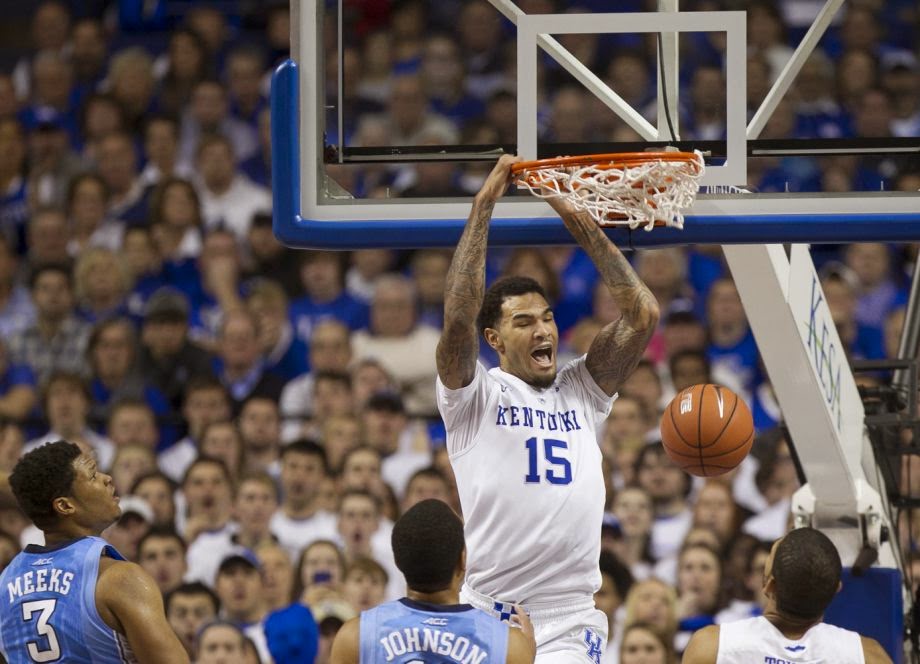
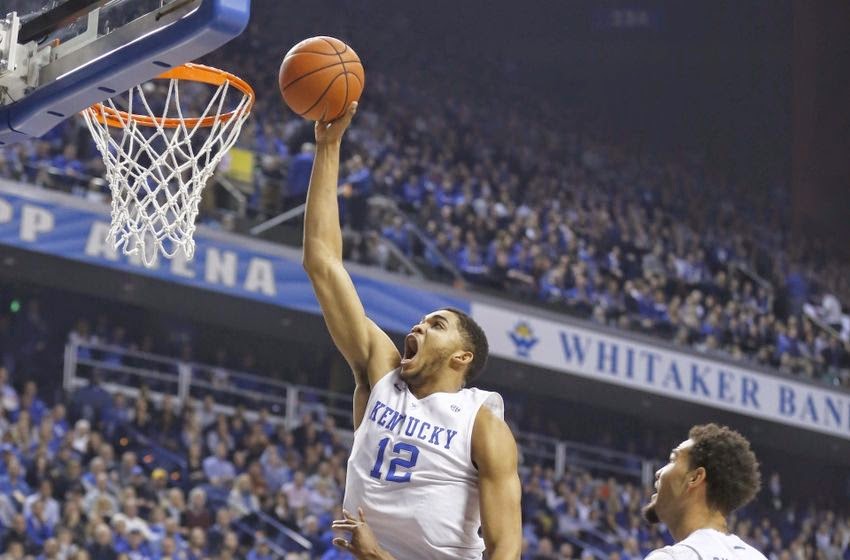
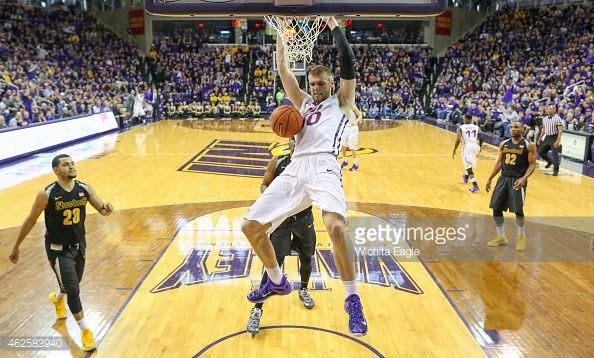
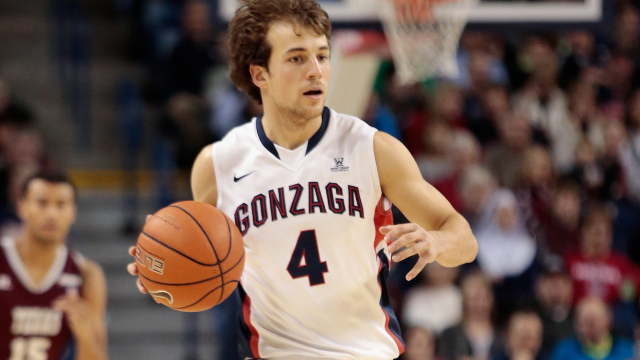
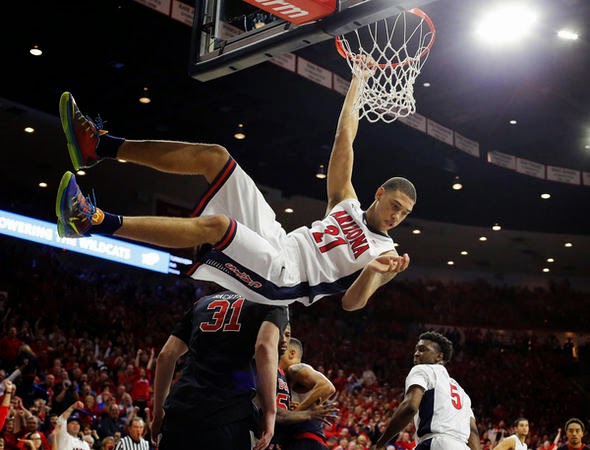
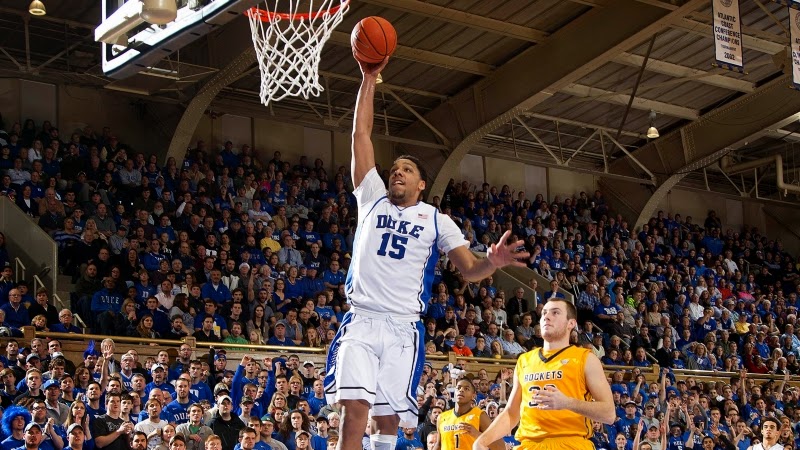
Not picking Wofford??
I think Arkansas is a bit too athletic for the Terriers, but if they slow the game down and get a big game from Cochran, they definitely have a shot.